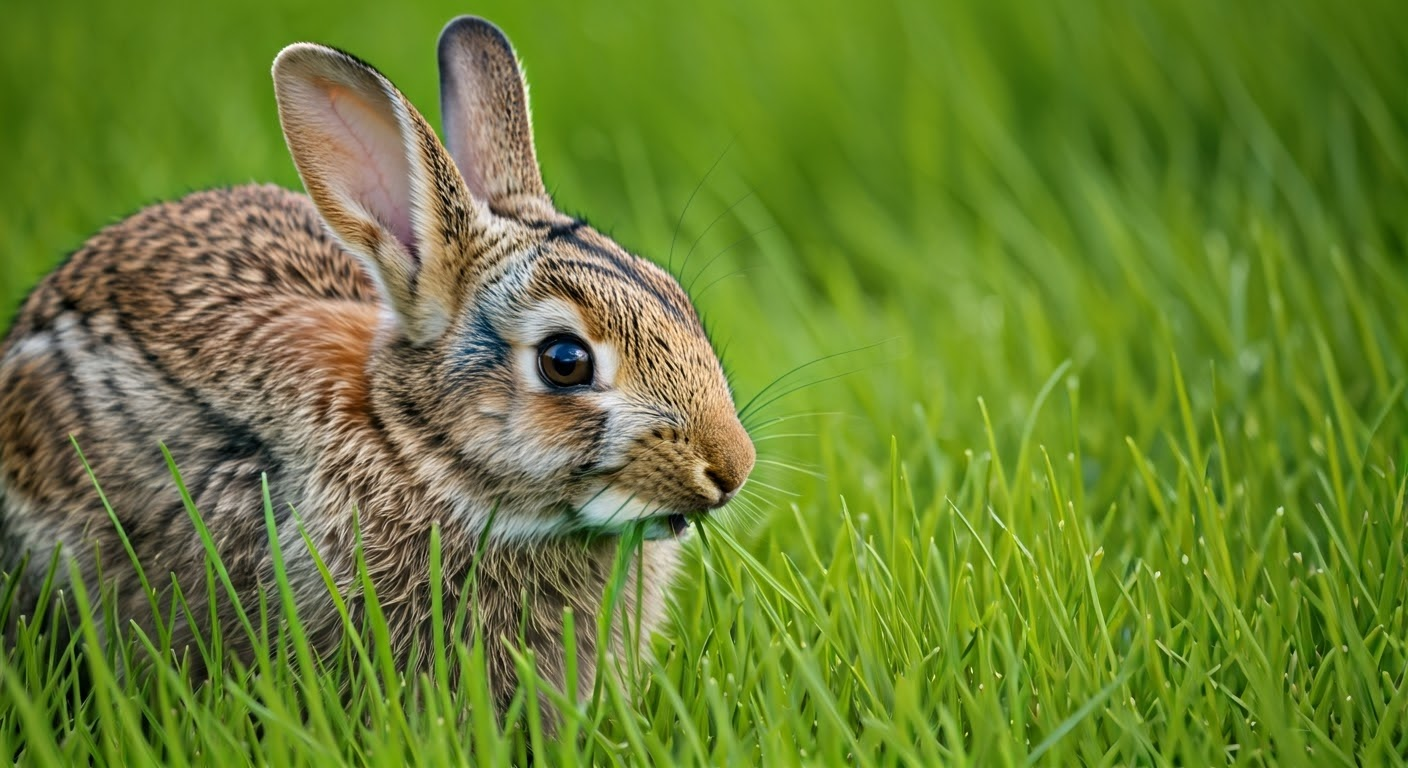In nature, living things are connected in many ways. One type of connection is called mutualism. This is a kind of symbiotic relationship where two species help each other. A common example is bees and flowers. However, mutualism can show up in other forms too. A less obvious example is the link between rabbits and the grass they eat.
Understanding Mutualism in Nature
Mutualism demonstrates how living things can assist one another in nature. This idea challenges the belief that life is only about competition. It shows that sharing can bring good outcomes. Relationships based on mutualism, whether between small bugs or large mammals, help maintain balance in ecosystems.
These partnerships matter for survival. For example, some bacteria in the gut help animals digest food. In return, the bacteria find a safe home. Other helpful relationships exist, but they are not always necessary for survival. By knowing this, we can understand how parts of ecosystems work together better.
The Basics of Mutualistic Relationships
At its heart, symbiosis is about different species working together. A mutualistic relationship is a type of symbiosis where both living things help each other. They can receive benefits such as food, shelter, safety from threats, or support in raising their young.
The concept of mutualism is simple. Each type of living thing helps the other, which benefits both. A clear example is the bond between the oxpecker bird and the zebra. The oxpecker eats ticks and parasites from the zebra’s skin. In return, the bird gets something to eat, and the zebra remains clean.
Mutualism teaches us that teamwork matters as much as competition in nature. It shows how all life is linked together. We must understand these connections to protect the environment better.
Key Examples of Mutualism Among Different Species
In nature, there are many cases of mutualism. This means two different organisms help each other. A great example is lichen. Most people think lichen is one organism, but it’s really two. It includes algae and fungi that work together.
The algae use sunlight to make nutrients. These nutrients are important for the fungi. In return, the fungi protect the algae from bad weather. They also help keep the algae in one place. This teamwork helps lichen grow well in tough situations.
One good example is the relationship between clownfish and sea anemones. Clownfish can live safely among the stinging tentacles of the anemone. In return, clownfish help to keep the anemone clean. They can also bring food close to it. This special bond shows the great variety of mutualistic relationships in nature.
The Rabbit and Grass Scenario: A Case Study

At first, it seems like watching a rabbit eat grass is easy. It looks like just a simple task. But when we look more closely, we see there is more to it. Rabbits and grass have changed over time. Their connection is not only about being predator and prey.
This feeding might look one-sided, but it helps both the rabbit and the grass. To understand this mutualistic relationship, we need to see how each species benefits from it.
How Rabbits Benefit from Eating Grass
Wild rabbits can easily eat grass because it is found everywhere. They are herbivores, meaning they can digest plants and get nutrients from them. Grass contains a lot of cellulose. This helps them have the energy they need to stay active.
Grazing is good for rabbits. It helps keep their teeth from getting too long. This practice keeps their teeth healthy and helps them eat better. Having strong teeth is important for their health in the long run.
In places like prairies, rabbits help control the grass. This prevents one type of plant from dominating. It allows many plants and animals to thrive together in the ecosystem.
How Grass Benefits from Being Eaten by Rabbits
Being eaten might seem strange, but it actually helps grass grow. When rabbits eat, they trim the tops of the grass. This lets new grass grow. It makes the grass thicker and healthier.
Photosynthesis is important for plants to grow. When rabbits eat older leaves, they reduce shading. This allows sunlight to reach the younger leaves underneath. These younger leaves can use sunlight more effectively.
|
Benefit |
Description |
|
Increased Nutrient Cycling |
Rabbit droppings fertilize the soil, providing essential nutrients for grass growth. |
|
Seed Dispersal |
Rabbits inadvertently carry grass seeds in their fur and through their scat, aiding in plant reproduction and dispersal. |
|
Control of Competing Species |
By selectively grazing on certain native plants, rabbits can help to maintain a balanced plant community, preventing overgrowth of any one species. |
The Role of Mutualism in Ecosystems

Mutualistic relationships, like the link between rabbits and grass, show the complex nature of life in all ecosystems. They highlight how different species rely on each other. This teamwork is very important, just like competition, in shaping how the environment works.
Mutualism is when different species help each other. This is important for them to grow and remain healthy. It plays a key role in making ecosystems stable and strong. To conserve nature and keep everything balanced, we must understand these relationships.
Balancing Ecosystem Dynamics Through Mutualistic Relationships
The study of ecology shows that mutualism is important for healthy ecosystems. Mutualism is not only about the relationship between rabbits and grass. Many plants need insects to help with pollination. This is crucial for the plants to reproduce. In return, the insects get nectar, which is sweet and delicious. This give-and-take between plants and pollinators is key for the survival of many species, including humans.
In a forest ecosystem, many things work together. Squirrels, which are seed-dispersing mammals, enjoy eating the seeds found in fruits and nuts. While they move around the forest, they drop seeds in new areas. This is good for helping new trees grow. This mutualistic relationship is important. It helps forests regenerate and supports different species to thrive.
Mutualism also plays a role in controlling populations. For example, cleaner fish such as wrasses eat parasites from bigger fish. This is good for the cleaner fish because they have food. The larger fish also benefit as they get rid of harmful parasites. These actions keep both types of fish healthy and help them survive. This can affect the balance between predators and prey in the ecosystem.
Mutualism vs. Other Symbiotic Relationships
Mutualism happens when two organisms help each other. There are other types of relationships too. One is parasitism. In parasitism, one organism benefits while the other one is harmed. A common example is a tick that feeds on a dog. The tick gains food, but the dog can get sick from the diseases the tick may have.
Commensalism is a type of relationship between two organisms. In this relationship, one organism benefits while the other is not harmed. A good example of commensalism is when barnacles attach to whales. The barnacles get food as the whale swims. Meanwhile, the whale is not affected at all.
Knowing the types of symbiotic relationships is important. These include mutualism, parasitism, and commensalism. Learning about them helps us understand life on Earth better. Each type affects how ecosystems work. They also shape how many species can live in a specific area.
Examining Mutualism Through Scientific Research
The study of mutualism helps us see how living things connect in nature. Researchers explore these links in different ways. They may watch animals and plants in the wild, or they might run tests in labs. This helps them understand how these relationships work and what impact they have.
Scientists gather and analyze data to understand the species benefits of mutualistic relationships. They also explore how these interactions affect the larger ecosystem. This information is crucial for conservation efforts, managing ecosystems, and grasping potential environmental changes.
Studies on Rabbit and Grass Interactions
Scientific studies have looked at how rabbits and grass work together. This research shows some interesting facts about their mutualistic relationship. Studies on how rabbits eat tell us that their grazing changes the types of plants and the health of grasslands.
Studies show that when rabbits eat the right amount, it helps some plants grow and prevents others from growing. This kind of eating supports a variety of plants. It is beneficial for the whole ecosystem.
Studies have examined how rabbits spread seeds. By looking at rabbit scat, researchers can see what kinds of seeds are spread and how far they go. This information helps us understand how rabbits help with the growth and spread of plants in their areas.
Broader Implications of Mutualism Research
Research on mutualism studies many species, not just one. It helps us understand the complex connections in ecosystems. By looking at how different species help each other through mutualism, parasitism, and commensalism, scientists learn how natural habitats stay healthy and balanced. For instance, studying wild rabbits shows us how they benefit native plants by grazing on them. This knowledge is key for conservation efforts. Research like this deepens our understanding of ecological links and shows why we need to protect biodiversity for the well-being of all living things.
Conclusion
In summary, rabbits and grass have a strong bond that helps nature stay balanced. Rabbits eat the grass, which keeps it short. This connection shows how different species work together for a healthy ecosystem. Knowing these relationships can help us in conservation efforts. It emphasizes the importance of protecting biodiversity. Mutualism is vital for keeping ecosystems stable and sustainable. It shows that different organisms need to live together happily. By looking at these mutualistic interactions, we can understand the delicate web of life that keeps our planet healthy.
Explore more great examples of mutualism in nature. Doing this will help you understand how ecosystems function together in harmony.
Frequently Asked Questions
What Defines a Mutualistic Relationship in Nature?
In ecology, a mutualistic relationship is a type of symbiotic relationship. This occurs when two different species help each other out and both benefit from it. Each organism receives something nice in return. They can get food, safety, or help with having babies.
Can Mutualism Exist Between Animals and Plants?
Many herbivores feel a strong bond with the plants they eat. For example, when grazing animals munch on vegetation, they help native plants grow stronger. This boost in growth improves photosynthesis and benefits many different plants in their environment.
How Does Mutualism Differ from Parasitism and Commensalism?
These are the different types of symbiotic relationships. Each type shows how species benefits are shared.
- In mutualism, both species gain something good.
- In parasitism, one species benefits but hurts the other.
- Commensalism occurs when one species benefits, and the other is not affected.
Are There Any Negative Effects of Mutualism?
Sometimes, problems can happen in mutualism, although it’s not common. When one partner depends too much on the other, changes in their numbers can lead to issues. For example, if a disease or predation impacts the prey species, it can hurt how well the other partner survives. This can occur even if the species benefits from their relationship.
How Can Understanding Mutualism Help in Conservation Efforts?
Understanding mutualism in ecology helps us protect different species that are connected. When we pay attention to these relationships, we can improve our conservation work. Keeping these connections safe is important for the survival of organisms that depend on one another.

Hi, I’m Sondip,
I’m a writer who loves to help people solve their problems. I write about small animals like mice and other small animals and even pests.

